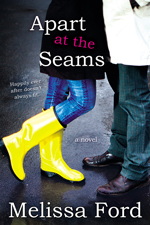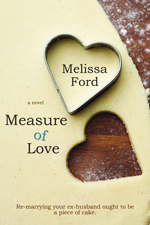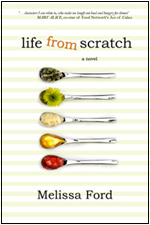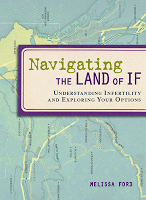Wearing Sneakers to Synagogue
Yom Kippur ended tonight. To me — more than any other holiday — you see the variety in traditions. In Judaism, we have laws (halakha) which are the same year after year, regardless of where you go (pretty much), and then you have customs (minhag) which vary depending on the community. For instance, I don’t wear leather on Yom Kippur. At all. Which means that I throw on a pair of chucks with my long black skirt for shul. Though the woman next to me last night for Kol Nidre services was wearing a stylish pair of three inch pink leather heels. She stared at my shoes and I stared at her shoes, because that is what happens when minhags clash.
Every year, I debate the leather thing with Josh because I feel self-conscious wearing sneakers into shul, especially if people don’t know why I’m doing it because it isn’t part of their minhag. Josh and I came from a shul where people wearing leather shoes were in the minority, and then we moved to a shul where we were the ONLY ones wearing sneakers, and then we moved to a shul where it’s about a 10% leather-free/90% bring-on-the-high-heels population. So we’re certainly not the only ones in sneakers, but most people are dressed in regular shul-going clothes. And I have to tell you that while I find it difficult to wrap my mind around the idea of letting this tradition go and wearing leather on Yom Kippur, conversely, wearing sneakers makes me feel strange too and I wonder if the people around me think that I have no sense to wear proper clothing to shul.
Another custom is whether you stand until the end of the silent amidah, a long prayer (it goes on for many pages) that people recite to themselves. I was taught that like waiting for everyone to be served at the table before eating, one doesn’t sit when they finish the amidah because it’s impolite. If people sit down, it can make people feel self-conscious if they’re the only ones still standing because they’re a slow reader. So I’ve always finished the prayer, and then closed my book, keeping my finger tucked between two pages as a bookmark while I waited for everyone else to finish. This way, the rabbi knows when the majority of people are finished, and the people who are finishing up don’t feel awkward that they’re still reciting what everyone else finished reading five minutes ago.
But at this shul — and at many of the other ones I’ve been to — it’s tradition to sit once you finish saying the amidah. And yet I continue standing because I think it’s impolite to sit down. Which means that towards the end, I am the only person standing in the shul. Which is ten kinds of embarrassing because everyone is staring at me, wondering why one woman is standing up in the middle of a random row, especially since she’s clearly not reading and is instead smiling awkwardly while she holds her finger between two pages of her book. And yet I also can’t bring myself to sit down because I don’t want to embarrass that last person who just sat down who would have been the only one standing if not for the fact that I am standing too.
And there are twenty other small discrepancies that pop up during the holiday from the choice of niggun (the tunes that are used to sing the prayers) to whether you remain in the room during the yizkor service (a section of the service to remember the deceased). And beyond that, Yom Kippur makes me miss our old shul where they trotted out a special tune for Adon Olam at the end of the service. Our current shul does a traditional Adon Olam, but our old shul had this gorgeous melody that was only used this one time a year. So you’d drag yourself to shul come hell or high water in order to hear it because you’d have to wait 365 days for a chance to hear it again.
While I am standing self-consciously in sneakers after the silent recitation of the amidah, I always wonder if other religions run into these same weird clashing of traditions. Are you ever in your church or mosque or temple (or wherever you go for communal worship) and finding your traditions differ greatly from the people around you?













31 comments
FWIW, no leather isn’t a minhag–it’s actually halacha. It’s just one people frequently aren’t aware of. Or they realize, as they’re about to go to Kol Nidre, that they don’t have any non-leather shoes. Not that this ever happened to me, of course…
I did smile when I saw the cantor in Crocs.
I’ve davened in a variety of shuls of different stripes (different denominations, countries, and traditions, from Persian to Anglo-Orthodox to egalitarian Conservative)–some were one-offs, but I’ve moved around and belonged to some very different shuls. I always find the differences interesting, even when I trip because it’s my 12th tune for Adon Olam. I’ve got several siddurim and machzorim at home, as well, and I like comparing them. At the same time, my current synagogue uses a different tune for Lecha Dodi than the one I grew up with, and I will never get used to it.
So while I followed that one, I broke a different inuyim today when I took a shower 🙂
I always thought that it was minhag and not halacha, so you learn something new every day.
I have never heard of no leather on Yom Kippur. I wore leather boots today, and my sister, who is more observant than I am, but we went to services together, also wore leather shoes. Fill me in, please?
I am merrily without religion, but like a spiritual heathen I kind of collected a few habits from several of them.. So people are usually perplexed at what the hell I’m doing/not doing.
Good on you for standing! That’s taking one in consideration for the team – which is good religion, I say.
When I went looking for a place to go (Christian) around here, huge huge HUGE culture shock.
Especially when going to places advertising themselves as more liberal and welcoming, and finding them to be much more cold and unfriendly than what I was used to, and finding comfort in (what was to me more) tradition(al).
It’s interesting seeing it on the Jewish side now, too, having been to a few places. And, while I was self-conscious wearing sneakers today, J would’ve disowned me if I’d worn leather. Of course, I also wore jeans (preschool service, man, I was up and down on a gym floor about 50 times within 45 minutes) and no white, which made me feel SUPER self-conscious – despite both not actually being Jewish AND the fact that, in our Reform community, I don’t think there was a single person there aside from the Executive Director who was wearing white. (I grant you it was likely different at the adult services down the street, but hey, if the other parents can look at me funny for wearing jeans, I can look at them funny for wearing black dresses and suit jackets).
I never know what to do at the end of the amidah, and I’m one of the slower readers as it is. It’s one of the few times that I prefer the custom of how the silent prayer was done in the church where I grew up; beginning and start times were announced. Heh.
Jodifur: In case you’re interested, the OU explains it way better than I will: http://www.ou.org/jewish_action/09/2012/whats_the_truth_about-fasting_and_wearing_leather_on_yom_kippur/ – with probably more info than you wanted to know! (I’m a total nerd, though.)
Coming from a more traditional Anglican/Episcopal background, I found the local congregation to be a bit of a culture shock. The minister at the time was into a more evangelical/charismatic style of worship. I was just getting used to “passing the peace” (shaking hands) before communion, & now I was also having to shake hands & greet everyone sitting around me at the start of the service as well. I know they were just trying to set a friendly & welcoming tone, but I think one or the other would have been just fine, both seemed a bit much. They also often had people hold hands across the aisles for the final blessing, which was entirely too much touchy-feely stuff for my liking. ; )
I also find myself feeling a bit fish out of water-ish when I attend a Catholic mass with dh’s relatives. The services are similar enough to what I grew up with that I can recite a lot of the liturgy along with the congregation (which I think surprises a lot of his relatives), but when everyone else starts crossing themselves or go up for communion, I just keep my head bowed.
You know, they do make dress shoes in fabrics – not leather. I know this, because I am supposed to wear leather shoes to work (for the safety factor of protecting myself from splashed chemicals), and I find a variety of cute shoes…that aren’t leather and are therefore not suitable for work.
Sometime in the last 5 years when I’ve been studiously avoiding church, they’ve changed things up. I have no idea what the responses in the Catholic mass are anymore. (For example, the exchange used to go: Priest: Peace be with you, Congregation: And also with you…but now, the congregation is supposed to respond “And with your spirit.” WTF does that even mean? Apparently it’s a better translation or something, but really – take heed of translations from Asia…sometimes the words don’t really make sense in translation.) But, because I’m a stubborn one, I just keep going on the way I learned. 🙂
I am so interested in all the “laws” and traditions you describe. I know so little about Judiasm and I really enjoy learning more about it. I have been wanting to ask, what exactly is a shul? Is it a temple or the congregation that meets there or something else more nuanced and harder to translate into English with one word? Thanks for furthering my education in Judiasm. 😉
It’s interesting: as a convert to Judaism, I find there is a really wide variety among customs at the synagogues I’ve gone to: in London, San Francisco and now our temple. A lot of congregants come from different places and when we go to Passover dinners or services or even preschool events, often the intonations of prayers or songs or blessings changes from person to person. It’s a source of endless fascination for me 🙂
Just wanted to tell you that I love that you stay standing until everybody is finished. That’s so polite and considerate.
Hell yeah Most embarrasing one. I’m protestant my husband is from catholic background and we do the PaterNoster slightly diferent. That usually ends in me saying the last words out loud in church or along with the confused priest. In songs or ritual text it depends on my general mood. Sometimes I find it really inspiring to hear things in a fresh way, sometimes it makes me homesick!
Oh and next year: Vegan heels darling http://www.noah-shop.com/ladies/elegant.html
what I like is that I can take on new traditions or let the ones I already celebrate change subtly over time. For me, as a secular Jew (as in, yes please to kugel and brisket and singing things, not so much the religion side) I’ve had to really find my footing living abroad. Where I grew up there where temples where you didn’t feel you had to necessarily have the full beliefs to participate in the traditions (which I loved, including my bat mitzvah) but in London I find that the temples are all actually quite religious (! shocker, I know). If we ever have kids and stay in this country I’m going to have to work a lot harder to find a way for them to identify with Judaism but without having to pretend I’m more religious than I am.
Yom Kippur really does highlight variety in traditions. While breaking the fast with friends last night, we discussed how we each enjoy many aspects of our current synagogues, but that neither feels completely like home because neither does exactly what our childhood synagogues did. It’s funny, I don’t think I had realized until last night that I am always seeking to recreate the services of my childhood, because to me, they’re the “right” way to do things.
I was going to ask if there weren’t non-leather shoes you could buy besides your sneakers so you would have one less worry but Mijk above answered that.
I am not a member of any religion but have attended many (many) catholic weddings & always feel awkward when I don’t genuflect (SP?) or kneel etc. I don’t want to seem disrespectful but don’t want to fake it either.
I’m not religious, but if wearing chucks makes you feel uncomfortable could you find dressier shoes that are fake leather? I have a couple of vegan friends that won’t wear leather shoes but have found some nice styles.
This raises a really interesting debate within Judaism about why NOT to wear the vegan-but-leather-looking shoe. In Judaism, a lot of things are banned not because there is actually anything wrong with them but because a person walking by may look quickly and think that either you are doing something wrong (or believe the inverse, that what you’re doing is okay). For instance, there are some men who wear kipot all day long, but they eat vegetarian at non-kosher restaurants. If they go in the restaurant, they take off their kipot. The reason being that if someone walked by the window and saw someone in a kipot eating at the establishment, they might believe that the establishment was kosher and then come in and order whatever they wish and accidentally consume non-kosher meat (vs. knowing it’s not a kosher restaurant and ordering vegetarian). So the vegan shoes would be similar — you want it to be obvious that you’re not wearing leather.
Pretty common. Very interesting. I think knowing the reason behind the tradition makes a big difference as to whether you’re prepared to keep or break it, too. And of course your reaction to the reason (whether you think it’s grounds for keeping or tossing or meh) reveals a lot about your values.
Saw more people in non-leather shoes than ever this year. Even saw a couple of people in flip-flops with socks. 🙂
My pet peeve is that our cantor (who does have a lovely voice) invariably picks a melody for the niggun that no one in the congregation knows. Why? WHY? You know that you’re in a service with few people who come to shul often — why take them out of the service like that? I’d rather have everyone singing than everyone standing there awkwardly mumbling. One day, I’ll get up the courage to ask him about it.
I love the consideration that you give to others. Whatever the traditions and variations … compassion = the whole point underneath the dressing.
I have an especially soft place in my heart for this latest example of your compassionate, respectful approach to being in a group … since dyslexia is an issue close to my heart now and since affects 10 -20 percent of the population, but most people have no clue what dyslexics go through … never give a thought to taking their fluency with printed words and written expression for granted. I am certain that I have read battle stories from dyslexics who suffered through years of religious rituals that required them to read aloud when they could not quite pull it off … and having others be intolerant, making the circumstance as painful as possible. I’m just surprised (but not really surprised) to find the subject come up here on your blog.
I don’t find discomfort in mismatched traditions so much — it doesn’t seem to come up around here. But I do relate to “which one of these is not like the others” discomfort very well. Endless examples of where I relate to being the only one still standing … in my sneakers … feeling very Mars in a room full of Venus.
I was not aware of the custom of standing while waiting for others to finish the Amidah. I usually close my eyes and go into personal prayer at the end and it’s only when the cantor or rabbi begins a soft niggun do I realize that I’m usually one of the last people still standing.
We go to a university Hillel, and this year, it was a new person leading services, and thus – new tunes. The ones I learned at my Hillel are the ones I know by heart. I had to do a lot of learning this time around and it threw me off. I also felt an interesting pull b/t a difference of customs: during the Mourner’s Kaddish.
On any given service, I typically stand, whether I’m mourning or not. It’s out of solidarity and community for those who grieve. Apparently, this is not Larry’s custom and when I went to stand this year, he was seated, so I felt weird and sat back down. For some reason, I don’t know why he didn’t stand this year b/c I thought he did. I dunno. But it was weird. So I read the Mourner’s Kaddish while sitting and he looked at me funny, like “Why are you reading that? No one’s died recently.” But it’s how I choose to observe.
I hope you had an easy fast this year. Mine was rough. Wishing you a belated shana tovah!
Yes, I so get this. My husband and I have the same general religious/ethnic background but yet our families come from different areas with completely different languages/food/customs. I always feel out of place, and my MIL insinuates that my parents didn’t try to maintain our culture growing up—not true, they did, it was just very very different!
Would fabric dress shoes with rubber soles (so obviously not leather that no one could believe they were) work? I’ve got tons of those; way more of my “cute” shoes are non-leather than leather, in fact. Though, really, there is nothing wrong with the sneaks unless you feel uncomfortable in them; rock on in your Converses!
I was raised Catholic, and while I don’t go to church regularly anymore, I do on occasion. I live in a different part of the country than where I grew up, and the churches here do things that I am totally not used to. During one of the prayers (I can’t even remember which one) here, everyone holds hands. When it first happened, I couldn’t imagine why the person next to me was grabbing my hand! There’s some other kind of gesture they make during the mass, but I can’t think of it now. It’s just a little more physical, I guess. There are some other small differences, but it’s the physical ones that jump out at me the most.
I grew up in a reform synagogue where I never felt at home. I went to sunday school, pre hebrew through confirmation and still have no idea what most of the traditions are. So, we’re trying a local Conservative synagogue. Besides everything being in hebrew, I don’t know most of the prayers, any of the traditions, almost none of the tunes. I feel like a failure as a Jew, but I want to badly to learn. Mine is a case of lack of tradition that makes me self conscious in the synagogue.
Isn’t the internet brilliant? I can learn so many things by being part of this community. All of this is new to me.
So interesting to read about why you would want obvious nonleather. I had one orthodox jew friend (living in europe I know very few jewish people here) and we had long discussions about sheitels… Same principle why cover your hair with something that doesn’t show that you cover your hair? So I understand!
My three kids and the rabbi wore Crocs. My husband and the cantor had on Chucks. I work fabric ballet shoes. My shul’s feet were about half leather clad. I saw a lot of Toms, too, and Keens.
But the Chucks thing- I think if you’re being halakhic, they’re not ok, either, right? Because you’re not supposed to tie a knot– that’s one of the activities as “work”. Does Josh wear a leather belt? My husband has a funny blue Nantucket-ish cotton braided belt he uses just on Yom Kippur.
Great read – post through comments.
Catholic church changed a couple years back, I guess? Still feels like the first time every time I hear the changes since I am a reluctant Catholic on the road to recovery.
Once upon a time, I thought we remained standing while everyone had communion. The priest is last and we remain standing until he has completed the sacrament, then sit down.
Guess that changed? People sitting down all around me. I think it is wildly rude. People sitting when they should be kneeling. Crazy distracting as I try not to shout at them in my head. Shame on me.
Robin (i.e. the tying a knot question): Tying your shoes as you normally would is ok. A “double-knot” is not ok, as it’s considered a “permanent knot.” Don’t ask me why I know this.
I loved loved this post and all the comments. I think something that has always struck me about my Jewish friends is the way having rules and then deeply thinking about how to live by them within modern times leads to such thoughtful conversation and actions. The exact opposite of doing things by rote or habit.
I really liked your comment about making sure that it doesn’t look like leather… because others might make false assumptions. Being thoughtful about own’s own actions I think has a huge influence on how own experiences life.. and how one considers his or her actions and how they’d influence others also does.
Many years ago I spent a summer working for a Jewish summer camp for kids with disabilities. There was no need to be Jewish to work there, but since most of the kids kept kosher and many had autism and some were quite young developmentally, we all tried to ‘look’ like we were eating kosher lunches. There was so much more important things to do in camp than try to explain why I was eating X and they couldn’t and etc etc. And which I was hardly keeping kosher (throwing non-kosher yogurt into tuperwares in the morning etc), that level of thinking about my food made every meal feel a bit more special somehow, even if it was just sack lunches of food I could afford on my student budget. I still can’t put into words that experience, but it was just as profound to me as some of my overseas trips have been on my world view and current way of living.